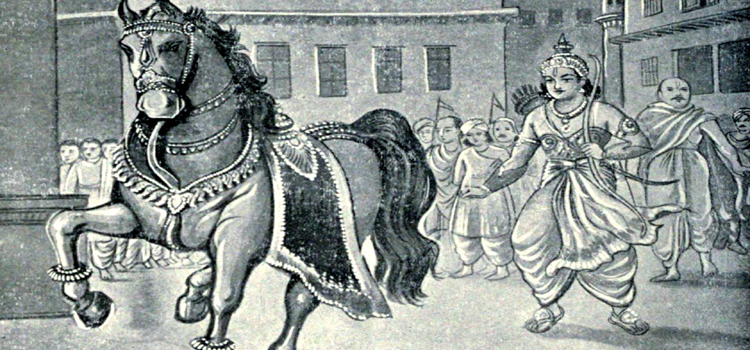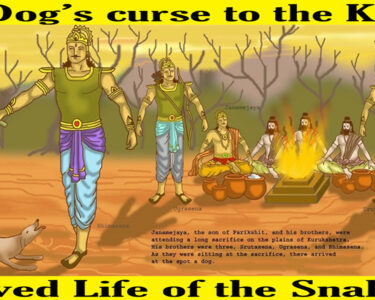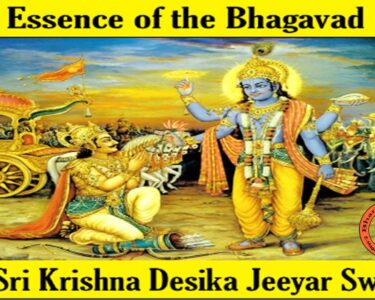SRIMAD MAHABHARATA > AADI PARVA > SANGRAAHA PARVA > CHAPTER 2(G)
(BRIEF OF ANUSHAASANA PARVA)
“Next in order is the excellent Anushaasana Parva. In it is described how Yudhishthira, the king of the Kurus, restored friendly relations to himself on hearing the description of duties by Bhishma, the son of Bhagirathi (Bhagirathi is also known as Ganga). This Parva treats of rules in detail and of Dharma and Arthaa; then the rules of charity and its merits; then the qualifications of donaters, and the supreme ride-regarding gifts.
“This Parva also describes the ceremonials of individual duty, the rules of conduct and the matchless merit of truth. This Parva shows the great merit of Brahmanas and cows, and reveals the mysteries of duties in relation to time and place. These are embodied in the excellent Parva called Anushaasana of varied incidents. In this has been described the ascension of Bhishma to Heaven.
“This is the thirteenth Parva which has laid down accurately the various duties of men. The number of sections, in this is one hundred and forty-six (146). The number of shlokas is eight thousand (8,000).
(BRIEF OF ASHWAMEDHIKA PARVA)
“Then comes the fourteenth Parva Ashwamedhika. In this is the excellent story of Samvarta and Marutta. Then is described the discovery (by Paandavaas) of golden treasuries; and then the birth of Parikshit who was revived by (Sri) Krishna after having been burnt by the (divine) weapon of Ashwatthaama. The battles of Arjuna – the Paandavaa, while following the yagna horse let loose, with various princes who in anger captured it (yagna horse). Then is shown the great risk of Arjuna in his encounter with Babhruvaahana the son of Chitraangada (by Arjuna) the appointed daughter of the chief of Manipura. Then the story of the mongoose during the performance of the Ashwamedha yagna.
“This is the most wonderful Parva called Ashwamedhika. The number of sections is one hundred and three (103). The number of shlokas composed (in this) by Vyaasa of true knowledge is three thousand, three hundred and twenty (3,320).
(BRIEF OF ASHRAMAVAASIKA PARVA)
“Then comes the fifteenth Parva called Ashramavaasika. In this Dhritarashtra, resigning the kingdom, and accompanied by Gaandhari and Vidura went to the forest. Seeing this, the Dharmic Pritha (popularly known as Kunti) also, ever engaged in cherishing her superiors, leaving the court of her sons, followed the old couple (Dhritarashtra and Gaandhari). In this is described the wonderful meeting through the kindness of Vyaasa of the king (Dhritarashtra) with the souls (Atma in Sanskrit) of his slain children, grand-children, and other princes, returned from the other world. Then the monarch (Dhritarashtra) abandoning his sorrows acquired with his wife the highest fruit of his meritorious actions. In this Parva, Vidura after having leaned on Dharma all his life attained to the most meritorious state.
“In the Parva, the learned son of Gavalgana – Sanjaya, also of passions under full control, and the foremost of ministers, attained to the blessed state. In this, Dharmaraja Yudhishthira met (Devarishi) Naarada and heard from him about the extinction of the race of Vrishnis.
“This is the very wonderful Parva called Ashramavaasika. The number of sections in this is forty-two (42), and the number of shlokas composed by Vyaasa aware of truth is one thousand five hundred and six (1,506).
(BRIEF OF MAUSALA PARVA)
“After this, you know, comes the Mausala of painful incidents. In this, those lion-hearted heroes (of the race of Vrishni) with the scars of many a field on their bodies, oppressed with the curse of a Brahmana, while deprived of reason from (intoxicating) drink, driven by the fates, slew each other on the shores of the Salt Sea with the Eraka grass which (in their hands) became (invested with the fatal attributes of the) Vajra. In this, both Balarama and Keshava (Sri Krishna) after causing the death of their (Vrishni) race, their (Balarama’s and Sri Krishna’s) hour having come, (they) themselves did not rise superior to the rule of all-destroying Time.
“In this, Arjuna the foremost among men, going to Dwaaravati (Dwaraka) and seeing the city without the Vrishnis was much affected and became exceedingly sorry. Then after the funeral of his maternal uncle Vaasudeva (Sri Krishna), the foremost among the Yadus (Vrishnis), he saw the heroes of the Yadu race lying stretched in death on the spot where they had been drinking. He (Arjuna) then caused the cremation of the bodies of the respected (Sri) Krishna and Balarama and of the principal members of the Vrishni kula.
“Then as he was journeying from Dwaraka with the women and children, the old and the weak – the remaining people of the Yadu race – he was met on the way by a heavy calamity. He (Arjuna) also witnessed the disgrace of his bow Gandiva and the unfavourable (effects) of his divine weapons. Seeing all this, Arjuna became discouraged and, following Vyaasa’s advice, went to Yudhishthira and requested permission to adopt the Sannyaasa mode of life.
“This is the sixteenth Parva called Mausala. The number of sections is eight (8) and the number of shlokas composed by Vyaasa aware of truth is three hundred and twenty (320).




2 Comments